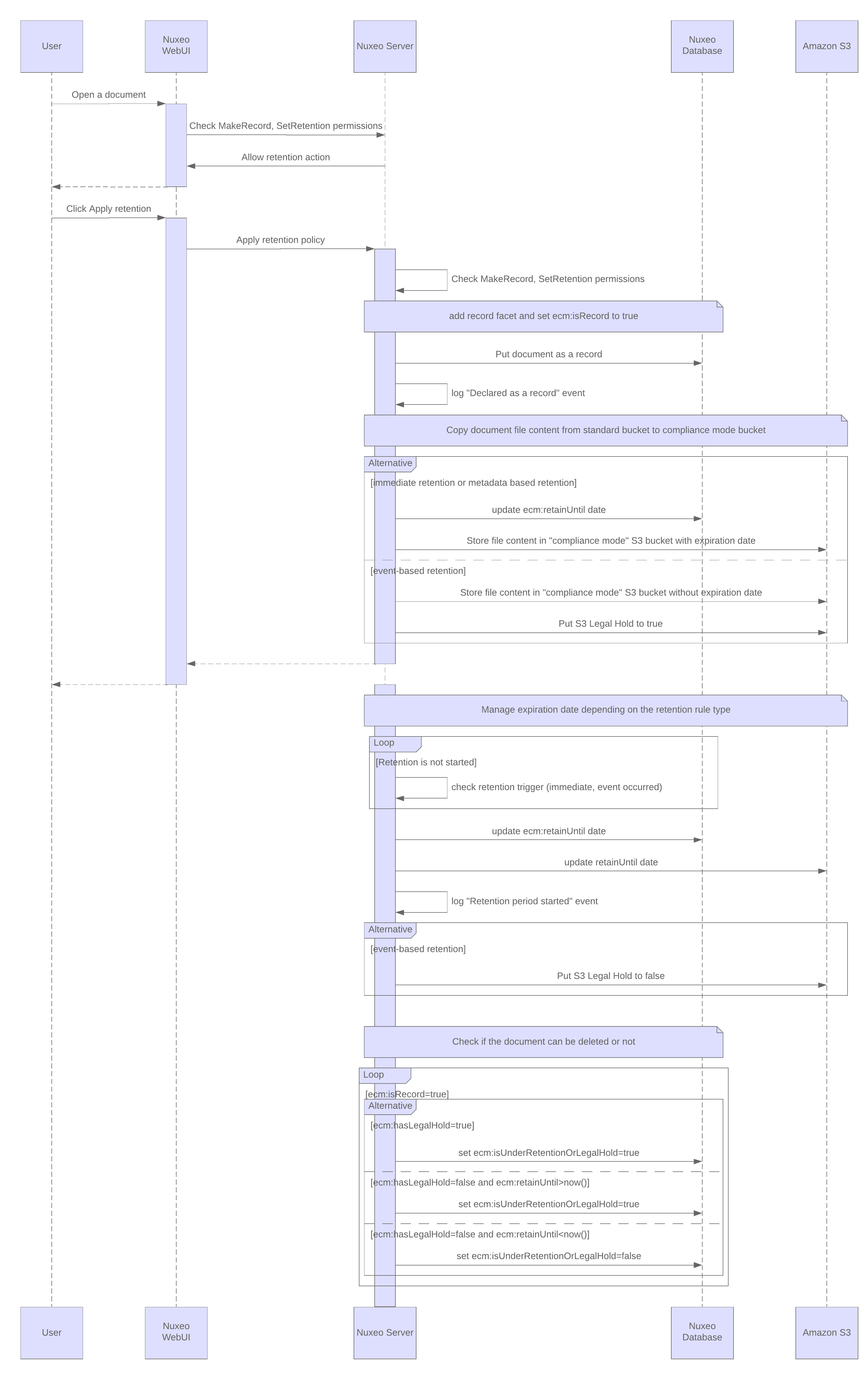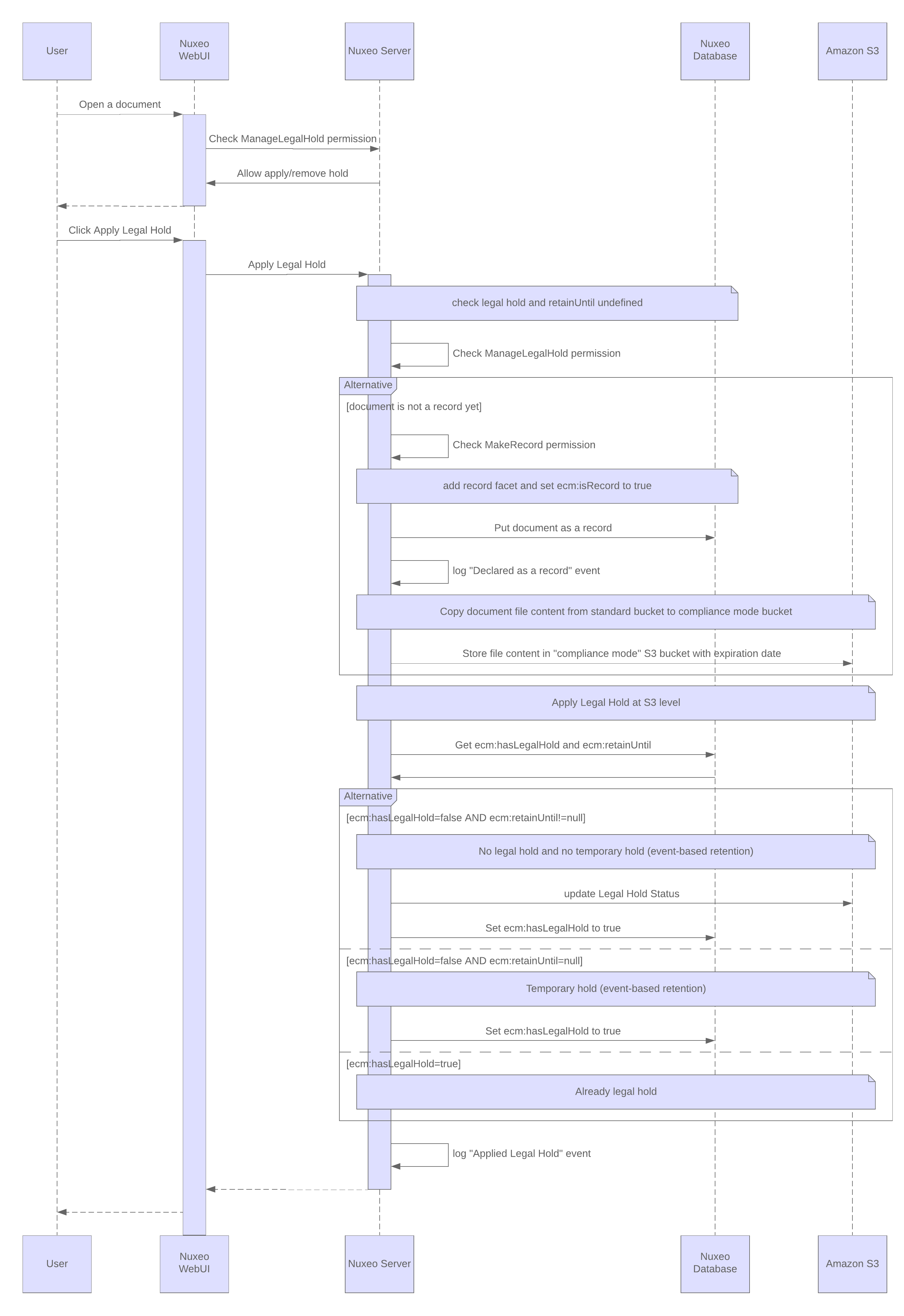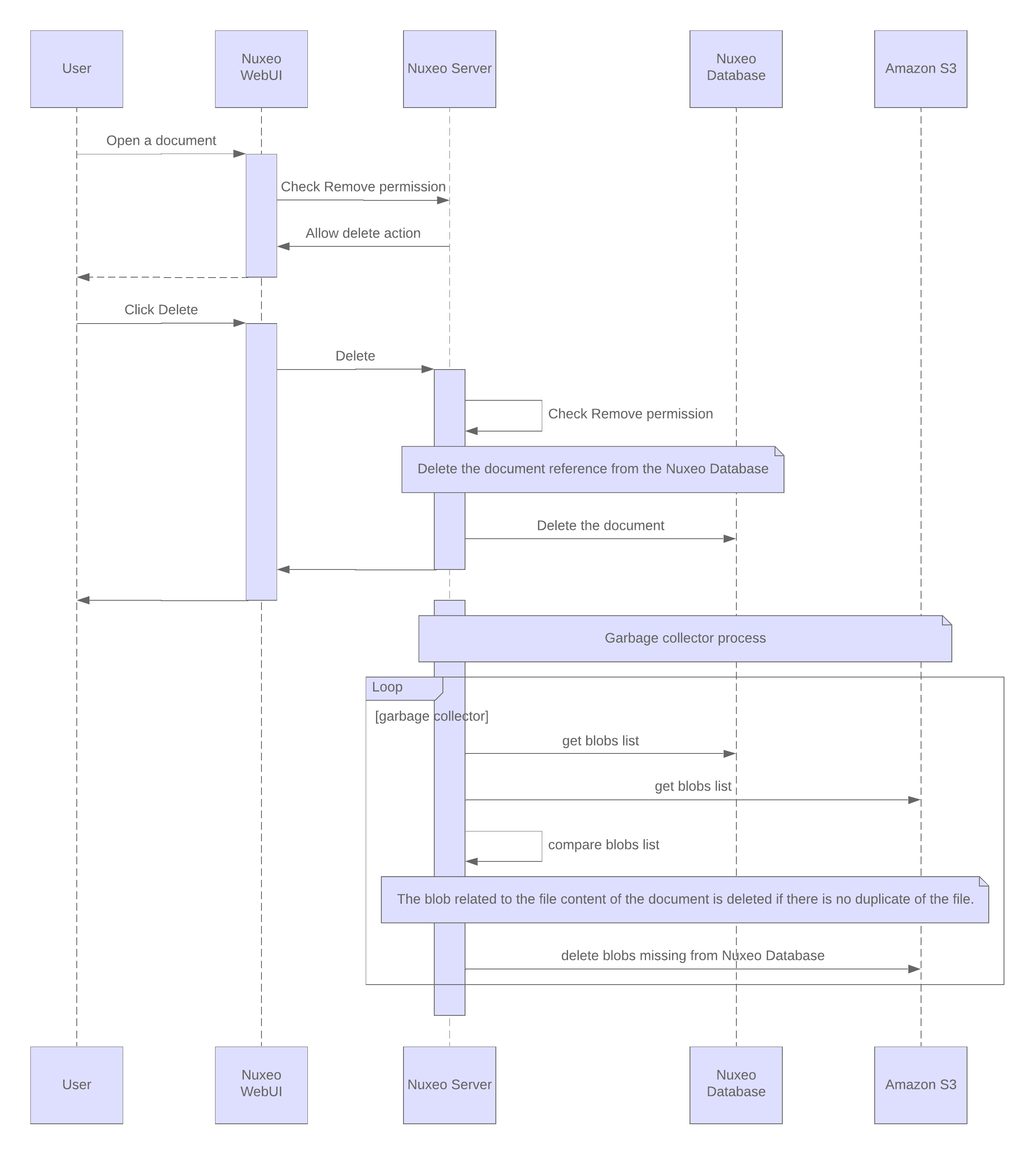Dedicated Low-Level Fields
To provide the required data to Amazon S3 (expiration date and legal hold) and to ensure that records can’t be deleted when not eligible, some new low-level fields have been added at the storage level:
ecm:isRecord(boolean):trueif the document is declared as a record.ecm:retainUntil(datetime): Expiration date (end of retention period).ecm:hasLegalHold(boolean):trueif there is a legal hold applied to the record.ecm:isUnderRetentionOrLegalHold(boolean):trueif the record is under retention and/or legal hold.
If a legal hold is applied to a document or if a retention rule is applied to a document, then:
- Modification of the main blob (
file:content) is prevented: this includes modification through restoring an older version. - Deletion (including recursive delete) is prevented: this is enforced at low-level and this information is made available per-document through a security policy.
ecm:isUnderRetentionOrLegalHoldis set totrue.
This applies in all situations, no exception, including for Administrators.
In case of event-based retention, the record is put on a temporary hold waiting for the event to occur (see Retention flow section). In this case, ecm:retainUntil is "indeterminate" (by setting the field to 9999-01-01T00:00:00.000+00:00), so deletion is prevented as if it was a date far in the future (this is turned into a legal hold at the S3 storage level).
A copy of a document resets its record, retention and legal hold information. This includes creating a new version (that’s why versioning must be disabled to be compliant). These fields don't apply to proxies, as proxies are just a convenience to access content stored elsewhere, and are not themselves records.
Retention Flow
When a granted user applies a retention rule to a document, the document is declared as a record and copied into the S3 compliance mode bucket.
Then, depending on the retention rule type (immediate, metadata, or event-based retention), the expiration date is calculated and applied to both Nuxeo and S3 object.
A background process checks when the event occurs and then starts the retention period (event-based retention).
Another background process checks the document expiration to change the status and make the record deletable. This process is run once a day (there may be a short delay for the record to become deletable).


Legal Hold Flow
When a granted user applies a legal hold to a record, the legal hold is applied at Nuxeo level and also at S3 level.
There are some specific use cases:
A legal hold is applied to a document which is not a record, the document is first declared as a record and moved to the compliance mode S3 bucket before applying the legal hold,
There is an event-based retention rule applied to the document and the event hasn't occurred yet, a temporary hold is applied to the record. So, the legal hold is only applied at Nuxeo level (as it is already done on S3 level),
The document is already on legal hold, there is no action done except to log the legal hold action on the audit log.


Deletion Flow
Standard Deletion Flow
The standard Nuxeo deletion flow is based on the following principles:
Immediate deletion of the file content referenced in the Nuxeo database when a granted user requests deletion action,
As Nuxeo handles deduplication of the file content (when 2 Nuxeo documents contain the exact same file, the file is stored only once), the deletion of the files in the storage media is done by the Garbage Collector process:
The Garbage Collector regularly compares the list of files stored on the storage media and the list of files referenced in Nuxeo Database as part of the document content,
If and only if a file is not referenced in any Nuxeo document (meaning all documents included the file have been deleted), the Garbage Collector process deletes the file in the storage media,


Record Deletion Flow
For the Retention Management addon, a specific deletion flow has been added for the following reasons:
The deduplication feature is turned off for records content as it is not compliant with retention features (ex: it's not possible to handle a case where 2 records referenced the same file content with 2 different retention period and the legal constraint to delete it right after the retention period),
For compliance purpose, we need to make sure the deletion is done when a granted user requests the deletion of a record and when Nuxeo logs the deletion event, which is complex to implement with an asynchronous deletion process,
That's why the record deletion flow is done as follow:
- The Garbage Collector process is disabled for the S3 Compliance mode buckets.
- The deletion process is done synchronously.

